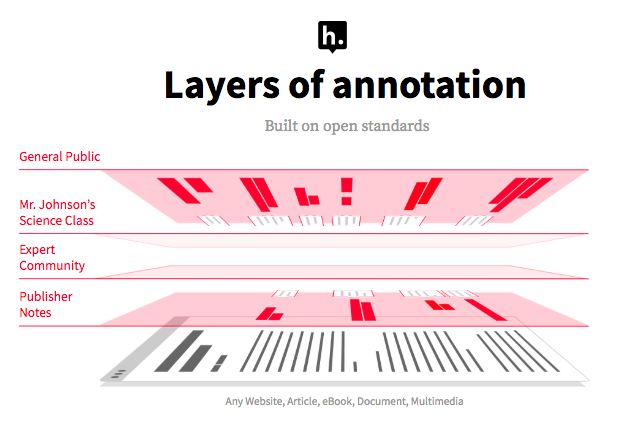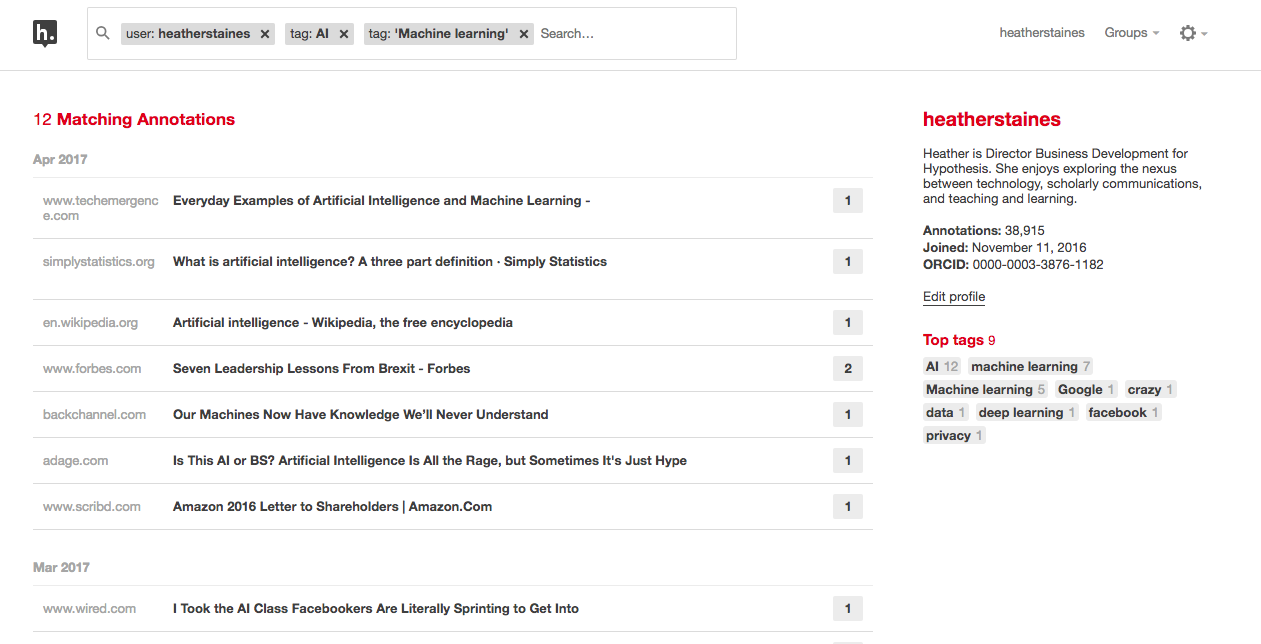With the revelation of illegal Facebook data use by Cambridge Analytica and the new focus on user data compelled by the EU GDPR (General Data Protection Regulation), there is an intense interest in who controls data, who collects it, and what can be done with it thereafter. Researchers are more concerned with transparency around who owns their data, what they can do with it themselves. Publishers too want to reassure authors and readers through flexible tools to meet different information needs. They also want to be able to compete with external sites like ResearchGate and track engagement on their content in all its incarnations across the web, while steering users to the version of record when appropriate.
From the earliest visions for the web, there was the notion that users should be able to add their own thoughts and data, making the conversation between content creators and content consumers truly a two-way dialogue. It took decades for the technology that would make that possible to catch up with the vision. Online commenting proved a poor substitute, siloing comments across the web, stranding conversations on different formats, and sometimes—when websites tired of incivility and spam—deleting interactivity once and for all. To be useful, annotation would require the codification of a standard that providers could build towards. The W3C approved that standard on February 23, 2017, giving tool providers a roadmap to follow and paving the way for annotation technology to be built natively into browsers.
New standards-based annotation technology enables researchers to annotate content anywhere on the web, regardless of format. Unlike commenting, annotation can be used across the researcher workflow, from initial reading, to feedback about preprints, to peer review, post-publication conversations, addition of additional data or updates, and in the teaching and education spaces.
With the wide availability of a standards-based toolchain, researchers can rest assured that their annotations will endure and can thus spend quality time creating notes, a process which translates to more time on (and more downloads from) publisher sites. With constant, immediate access to annotations made on research articles, researchers can easily return to check the context of their notes, and they can readily share these notes with others, expanding the research impact of content.
We are thrilled to partner with Silverchair to offer new annotation options to publishers. As an open-source tool provider, we encourage publishers to embed the free version of Hypothesis on their sites. With the addition of a quick line of JavaScript, a publisher can provide a valuable tool to researchers and readers, avoiding the need for them to install a plugin or bookmarklet. This basic integration enables public annotations, private note-taking, and the creation of collaboration groups. Researchers have access to all of their annotations, whether public, private, or in a collaboration group, via their user profile page. Here, they can search annotations, filter by tags, and explore the annotations created by others. By including a tool that more than 145,000 users are already utilizing, the publisher can fit into a wider ecosystem of workflow solutions. More than 3.2 million annotations have been created with 20 percent in the public channel. We provide a full adoption success strategy for publishers who choose this option.

Annotation layers
Those who require a more customized solution, which puts more control in their hands, can explore new types of publisher groups. Hypothesis Publisher Groups give publishers the ability to enable conversations across their publications, to create additional content through dedicated author or expert layers, and to provide researchers and end users with a tool for private note taking and collaboration. These publisher-branded and moderated layers can be customized to fit publisher websites and to connect to existing publisher accounts, if desired, removing the need for a user to create a separate account. Annotations made in publisher groups are gathered into group activity pages where they are always accessible, searchable, taggable, and sharable. Readers discovering publicly visible annotations via group pages, or via Google, can easily visit them in context atop the publisher version, increasing engagement and downloads for publishers.
With more publishers considering open access and other new business models, there is an increasing emphasis on reader engagement as a success metric. Publishers receive full data and analytics on annotations that are made publicly visible, including creator, date/time, article annotated, and annotation text. For private and private group annotations, publishers receive aggregated anonymized data on which content received annotations and when. With the W3C approval of annotation as a web standard, annotation is quickly joining other types of engagement as an altmetric.
The first Open Group successfully launched in January of 2018. Anyone can participate in these world-readable and world-writeable groups. Authors add additional information and interact with readers around findings and supplemental resources. Editors can provide updates and clarifications about content. Readers can connect articles with resources across the web, adding images, videos, and rich media.
Recently, we introduced the first Restricted Group, an annotation layer that is world-readable but writeable only to those invited by the publisher. Our first such group was enabled to provide editorial updates across medical content. Visible by default on the articles in question, annotations provide updated charts, helpful external links, and additional resources to assist both physicians and lay readers. The publisher can provide information about annotation approval and publication dates, along with a suggested citation.
As a non-profit, we value our independent voice. We cannot be acquired by the competition. We also understand that user control over their own data is key. Individuals and organizations always have access to their annotation data via our robust API. Annotations can be accessed or repurposed for other uses, like TDM or display on product pages.

Hypothesis activity page
Annotation technology enables the creation of a unique persistent address for any content viewable on the web. With that capability in mind, publishers are discovering new use cases all the time. Hypothesis has been integrated with some manuscript submission peer review dashboards to offer reviewers the option to provide feedback through inline annotation. Production departments are using annotation to handle questions on their XML staging sites or within editorial to plan for the migration of journal web pages. Preprint services are considering enabling publisher groups to be visible by default on top of their servers. Using the popular Scibot account functionality as a model, publishers with identifiers are exploring annotation to connect external data to identifiers in their content. Scibot searches papers for RRIDs (Research Resource Identifiers), key for reproducibility and used by more than 125 journals, then displays information on each in the form of an annotation card on the publisher site. There is also an initiative out of Syracuse University’s Qualitative Data Repository designed to connect citations to their sources and underlying data through annotation. The possibilities are endless.
For more information on publisher groups or to brainstorm on how annotation can add value to your content, please contact heather@hypothesis or ask your Silverchair PDM to arrange or a demo. Also look for us at upcoming industry meetings.